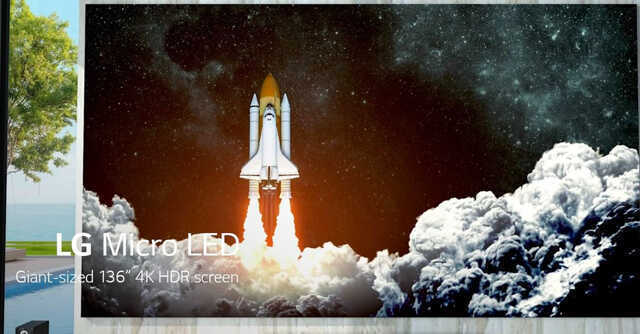
CES 2022: Breaking down how Samsung, Sony and LG's new TV display technologies work


Every year, televisions make for one of the fanciest categories to follow at the Consumer Electronics Show (CES). From mammoth screens larger than living room walls, to the newest technologies that would make it to consumer markets in a few years, the world’s most popular TV manufacturers always have a trick or two up their sleeve.
At CES 2022, the range of TVs include two types of OLED TVs from Sony, microLED and QLED TVs from Samsung, and OLED and miniLED TVs from LG as the highlights of their respective 2022 portfolios. On this note, we take a look at all the TV technologies showcased at CES 2022, to understand what each brings to the table, and how they fare against each other.
QLED

The typical QLED panel uses quantum dot LEDs to render the picture on the screen. Initially promoted by Samsung across a large section of its TV portfolio, QLED TVs such as Samsung’s The Frame 2022 use semiconductor nanocrystals above a traditional LED panel to render the picture. The key benefit of a QLED TV are its quantum dots, which can render a wider range of colours -- thereby producing greater dynamic range of colours than a typical LED display.
Also read: CES 2022: Samsung, LG bank on different technologies for similar TVs
OLED

Unlike a QLED TV, an OLED (organic light emitting diode) TV does not require LED backlight to project the picture on an LED panel. Instead, the pixels are light-emitting diodes themselves. This means that they themselves emit light, and do not require backlight to render the picture. In essence, this gives OLEDs the ability to instantly power off any number of pixels in screen areas that are required to be dim. This is what gives OLED TVs their famed contrast levels, capable of producing brighter whites and deeper blacks.
QD-OLED
The claimed showstopper of CES 2022 is QD-OLED, which stands for quantum dot-organic light emitting diode. The technology was being developed by Samsung Display since 2019, and will feature in both Samsung and Sony’s TVs this year. However, contrary to all the marketing jargon, it is not an all-new piece of technology. The QD-OLED panel essentially claims to have improved the brighter areas of OLED picture by combining it with the colour saturation benefits of a QLED panel. Fundamentally, though, it is an OLED panel only.

miniLED
The essence of a miniLED TV is similar to a conventional LED TV, except with smaller LEDs for backlighting. This means more granular backlighting control, which can produce better dimming across screen areas. The advantage of miniLEDs lies solely in backlighting, which can then be combined with any non-emitting pixel layer between itself and the LCD layer. Samsung, for instance, uses its quantum dot pixel layer above miniLED backlighting layer to offer its range of Neo QLED TVs -- which were also unveiled at CES 2022.
Also read: CES 2022: Asus soft launches its suite of OLED laptops

microLED
The truly new TV panel technology is microLED, which uses non-organic light-emissive coloured pixels. The technology essentially brings together the micro-control of miniLED backlighting, with the contrast advantages of OLED and colour advantages of QLED TVs. In essence, microLED TVs do not cause the picture burn-in problems that OLED panels face. However, microLED TVs are incredibly expensive at the moment -- be it Samsung’s new 110-inch microLED TV, or LG’s CES 2022 flagship, the 136-inch, 4K microLED behemoth.
